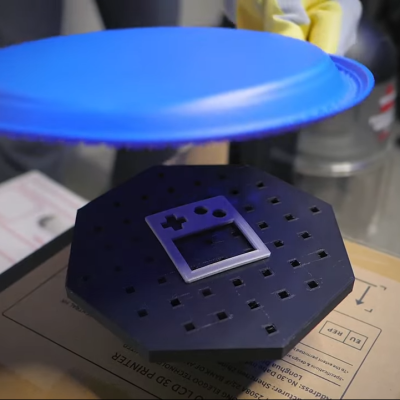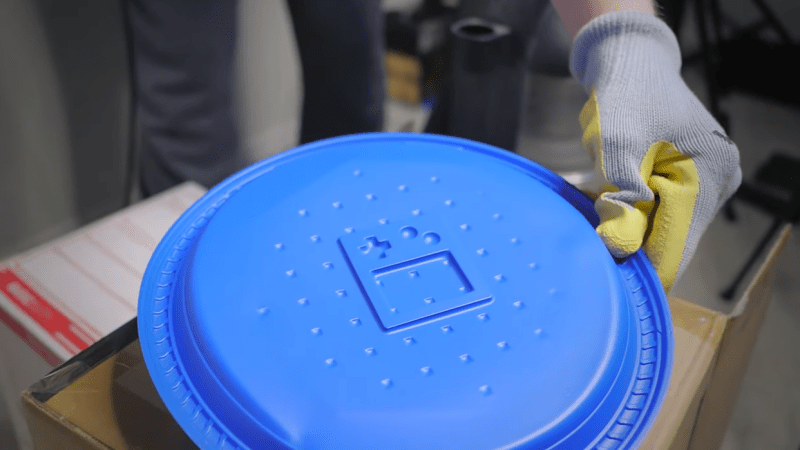Vacuum forming is a handy thing to be able to do, and [3DSage] demonstrates how to do a bare-bones system that can form anything smaller than a dinner plate with little more than a 3D printed fitting to a vacuum cleaner, a heat gun, and a trip to the dollar store.

The 3D printed piece is a perforated table that connects to a vacuum cleaner hose, and [3DSage] mentions elsewhere that he tried a few different designs and this one worked the best. A cardboard box makes an expedient stand. The object being molded goes on the table, and when the vacuum is turned on, air gets sucked down into the holes.
As for the thermoforming itself, all that takes is some cheap plastic plates and a heat gun. Heat the plastic until it begins to droop, then slap it down onto the vacuum table and watch the magic happen. Using plastic plates like this is brilliant. Not only are they economical, but their rim serves as a built-in handle and helps support the sagging plastic.
Thermoforming plastic on a 3D-printed vacuum table and using 3D-printed molds definitely isn’t a system that will be cranking parts out all day long, but as long as one allows time for everything to cool off in between activations, it’ll get the job done. Nylon will hold up best but even PLA can be serviceable.
Watch it in action in the video embedded below. The video is actually about [3DSage] making adorable Game Boy themed s’mores, but here’s a link to the exact moment the vacuum forming part happens.
















I know someone is gonna say it anyway so:
That sucks! but it’s hot tho.
Using plastic plates here makes it such a cool science lab/school makerspace experiment. Instead of having to cut out individual plastic sheets for 50+ individual students, a teacher can just buy a stack of plates and pass them out
Now vacuum form that cat!
You’ve already got some gloves on, so that should help a bit, but you’d better do it real quick.
Miiii — aauwtch!
Keeping the plates as plates would be a pretty simple application too. For example by putting some custom name or logo in the bottom for a party. But overall, I think the heatgun gets boring pretty quicly. You probably want something to heat the plastic more evenly and without having to hold it while heating, but for occasional use it probably suffices.
You can’t buy plastic plates here in Australia anymore
Which really sucks if you need disposable containers for mixing small amounts of resin or silicone
No plastic pudding snack containers either? For even smaller amounts I use the paper box material used to contain frozen dinners. Just cut up the boxes and keep them. Use the smooth white surface of the inside of the box to mix which makes it easy to see what you’re mixing. The paper is made to resist moisture so it doesn’t interact with what you’re mixing.
Same here in the Netherlands, at least not in the big stores. These are almost always coated cardboard.
Damn! I never buy them, so I had not noticed.
Opportunity!
Ship in a container full and sell them on the street.
Black market dishes. You’ll need a big trenchcoat to sling those.
sweet
Clever way to ensure you’re using a food safe plastic, too!
This reminds me of the old Vac-U-Form that is still beloved by modelers (and still has plastic sheets available I think). It’s not a huge leap to go from this to vacuum-forming simple things in your oven out of ABS sheet or similar using a wooden form and a shop vac. You really should be sure that nobody’s going to be upset when you appropriate the kitchen for this kind of thing though…or so I hear.
Has anyone tried this using “chromed” plastic plates? I have some small interior car parts I want to reproduce that are NLA and I’ve been looking at ways to do this without having to resort to chrome paint.
That’s a brilliant idea! Did you ever try it?
I’m thinking the stretching would ruin the plating on the plastic, but it might be a cool effect anyway.